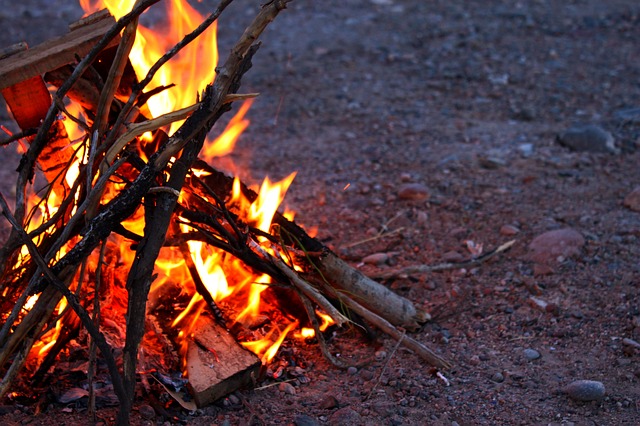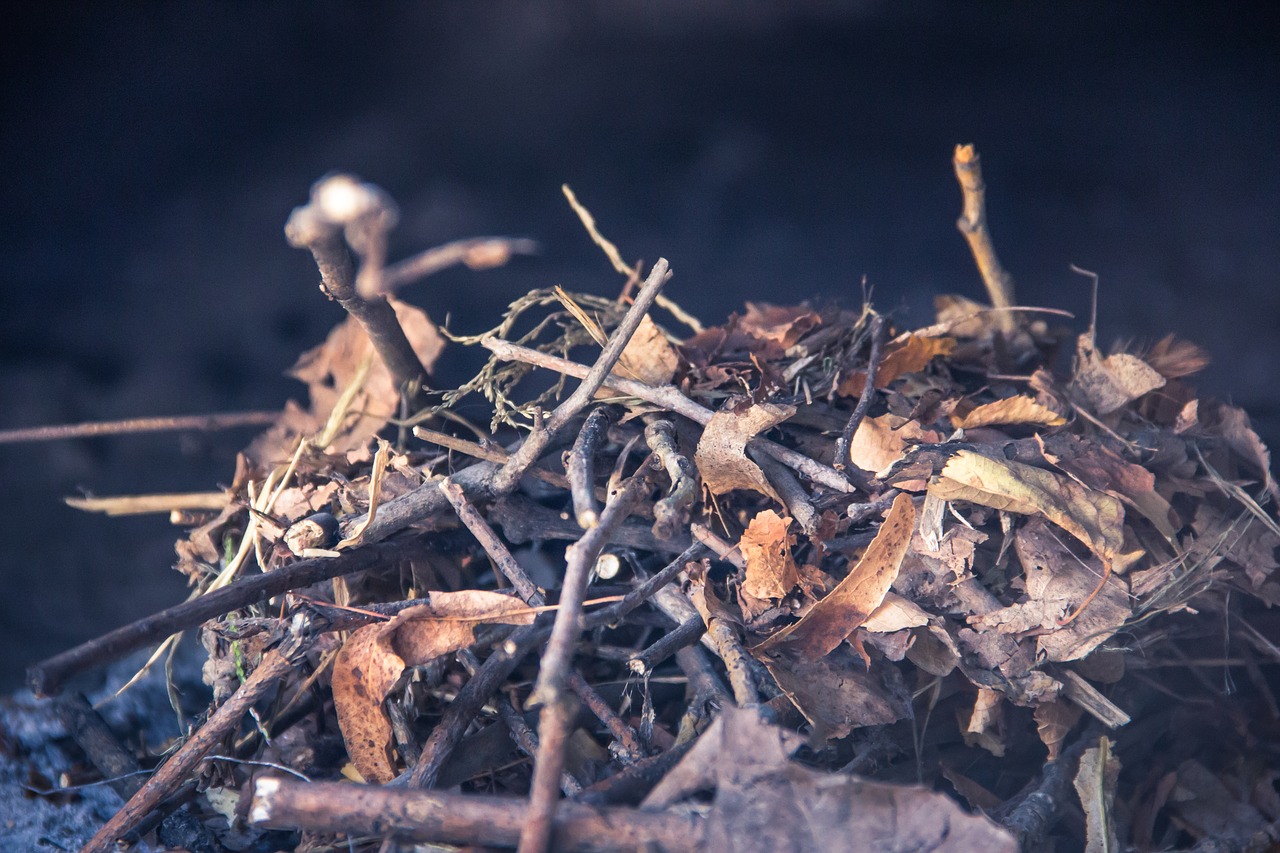Last Updated on October 11, 2022 by admin_hunter
Fire is a key feature of outdoor life, and it is almost impossible to survive without it in nature. When planning for survival, it is important to acknowledge that you won’t always have access to your conventional lighters, matches, and fire pistons. You might have to leave conveniences behind if in a hurry or circumstances do not allow you to access your meticulously packed survival gear. An important bit of survival planning is learning how to make do with whatever is readily available, which is often naturally occurring material.
These alternate fire lighting techniques are relatively difficult to execute and require patience, which is why we seldom use them anymore and most of us don’t know how to execute them. Today we’re going to learn how to make a fire with sticks which is among the oldest of these techniques because sticks are readily available in most natural environments. We know you will welcome the ability to make a fire to keep warm, scare away wild animals, cook, and generally uplift your mood in the middle of a survival emergency that you are not equipped for.
Different Ways to Make a Fire with Sticks
Hand Drill Method
This is the most primitive of all the techniques. It is straightforward but requires some effort. You make the fire using a spindle and a fireboard.
You need to select an appropriate combination of wood for the fireboard and spindle to work. Dry softwoods like cottonwood, willow, juniper, sotol, hibiscus, cedar, and aspen are recommended as they form embers faster. You can however combine a spindle from harder wood with a softer fireboard and still get good results.
Cut a V-shaped notch into the fireboard using a knife or a sharp tool and place a piece of bark and kindling underneath the notch to catch embers. Create a small depression next to the notch. (You can use a piece of rock pressed against the firewood to achieve this).
Place the spindle in the depression on the fireboard (a two-foot spindle is ideal for this work) and start rolling it between the palms of your hands, spinning it into the depression. Keep working the spindle until the heat from the friction makes its tip glow red and embers form.
Tap the fireboard to deposit the ember(s) on the piece of bark with kindling and transfer them to your ready tinder bundle or nest where you will blow the flame to life.
As simple as the hand drill is, maintaining speed can be difficult because only the hands are rotating the spindle and you will get tired. This method is best applied in dry climates.
Bow Drill Method
This is a modified version of the hand drill method that is faster and more effective but a tad more complicated. You still need a fireboard and spindle with a bow and stone in tow. The ideal bow for this is about an arm’s length and you can improvise for the string by using available items like shoelaces that you will tie to both ends of the bow.
Wrap the bow string around your spindle and place one end of the spindle in the depression on the fireboard.
Move the bow back and forth with one hand to rotate the spindle while the other hand presses on the stone to apply pressure on the spindle against the fireboard. The stone at the top of the spindle keeps it secure.
Keep going until you see smoke at which point you should increase the pace to hasten the formation of embers. Transfer the embers to your kindling and blow on them to get the fire going.
Fire Plow
For this, you’ll need a fireboard and a plow. The fireboard can be a dry, flat piece of any of the softwoods mentioned earlier. The ideal plow should be a two- to a three-inch wide flat piece of wood that is slightly harder than the fireboard with the head tapered at an angle.
You will dig a six- to eight-inch groove on the fireboard that is wide enough to fit the plow shaft.
Draw the plow up and down along the groove on the fireboard while holding it at a 45˚ angle to the fireboard. This angle allows you to exert force and create friction between the plow and the fireboard.
The plow produces its own tinder by chipping particles off the fireboard and pushing the wood dust ahead of the motion. These particles will create a hot ember nest thanks to friction.
As the temperature increases the softwood will ignite and form embers which should light up the hot tinder after which you can transfer them to your kindling to light the fire.
Keeping The Stick Fire Going

Creating the spark is only the first obstacle despite the skill and patience it demands. To make a fire with sticks useful, you need to sustain it for a reasonable period. This involves managing your fire starter sources so you can build the fire gradually and consistently.
Tinder
These are the tiny pieces of extremely dry wood (fuel) that you will use to ignite your first flame. They burn easily and will catch fire from the tiniest of sparks, which is why they are used as a first contact. You need one or two handfuls to ignite the fire. They also burn out fast and will therefore not sustain a fire as the sole source of fuel. You should transition to more sustainable fuel sources as soon as you can.
Once you have your tinder in place, you should arrange it in a bird’s nest formation where you will place your hot embers and blow at it to ignite the flame.
There are different sources of tinder that you can exploit based on your environment and what is readily accessible;
- Manmade Fibers
These are derived from what you have on your person and come in handy especially when it has been snowing or raining and the ground is soggy or wet. Look for dry lint in your pant pockets, tampons, maxi pads, or fibrous ropes like a paracord which can be unraveled.
- Fleecy Grass
This category of tinder features dry grass and other naturally available fluffy material like abandoned bird nests, cattail fluff, milkweed seed fluff, fibrous or resinous bark, and any other items you might come across. Whichever option you go with has to be dry so it can be ignited by an ember.
- Tiny Sticks
Look for thin dead stems or branches almost the size of a needle or toothpick. The drier they are the better because they’ll catch fire faster. Avoid sticks with sap as they’ll hardly ignite from an ember.
- Wood Shavings
If you have tools at your disposal, you can shave off thin flakes of wood from trees, branches, and/or fallen logs. They make excellent tinder provided they are dry.
Rovertac multitool hatchet
Consider adding this Rovertac multitool hatchet to your collection as it will come in handy when sustaining a fire. It has 14 different tools, many of which will help in managing your fuel in different ways. There is a hammer, axe, knife blade, and saw which can be used to forge your fireboard, cut through firewood and shave off tinder and kindling. It comes with a durable sheath that fully covers the blade, making it easy to carry around.
Kindling
This is the next level of fuel that should build up your flame from the now smoldering tinder to a full-fledged fire. They are mainly small pieces such as a dry stick or twigs that can catch fire easily and maintain flames temporarily; long enough to set the actual firewood on fire.
You will find them in dead softwood trees and you can shave them off twigs if you have the tools. The innermost part of dead branches is the most ideal as it is guaranteed to be dry even if there’s been rain.
Firewood
This is the last tier of fuel that you introduce once the flames are stable. Always start with smaller logs of thin softwoods and proceed to larger logs gradually. Ensure they are dry and your arrangement provides plenty of aeration so the fire can be naturally stoked.
All three tiers of fuel should be ready before you start the process of making a fire with sticks.

Making fire without your regular lighting tools is an essential survival skill that is often overlooked thanks to our continuous dependence on these handy tools. You should try out these techniques in controlled environments like a fire pit or when making a campfire to be prepared for unforeseeable emergencies.


